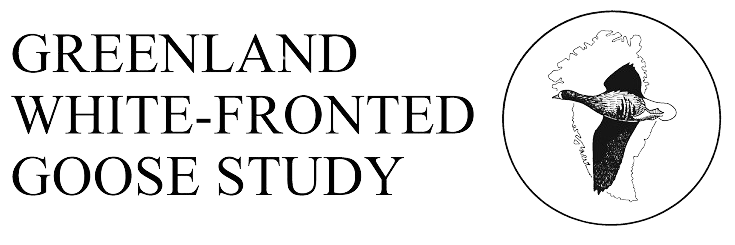History and status
Regional importance. This is an apparently new site, not recorded by either A-W (1963) or R&O (1979), although Berry (1939) did mention a flock on Lewis. The site has been regular since at least 1971, when 55 were present. There seems to have been a steady long-term decline since that time, although there have been 20-40 birds present throughout most of the 1980s and 1990s, with some suggestion of a very recent decline (see figure).
Maximum winter counts:
Breeding success: There are no consistent production data from this site.
Feeding sites and habitat: Rough sheep-grazed pasture with a little bogland, although the geese do resort to the elevated short maritime saltmarsh turf of local headlands (e.g. at Aird Mhor Bragair, Bragar (NB2749)), where they seek refuge from disturbance and probably roost. The flock mostly uses rough pasture with rushes and grazing land in the croftlands between Barvas and Shawbost, including Barvas Glebe (NB352495) and Bragar, and the wet rushy valley between the two townships at Shawbost (NB265475). However, they are most often been seen on reseeded grassland (e.g. NB317483) around Loch Urrahag (NB3450), to which they will frequently resort if disturbed. The geese use rolling fields and are frequently out of site from vantage points. In winter 1990/1, they were only ever seen by Loch Urrahag at NB320480 throughout the entire winter despite frequent checking elsewhere. Yet in winter 1995/6, the birds were not seen in their usual feeding areas before 18th November 1995, and then were not seen again until 20th January 1996, despite weekly searches. This and the lack of many known alternative feeding sites suggest that the variable numbers observed from year to year may suggest more, as yet undiscovered, feeding sites.
Roosting sites: Not known, but almost certainly Loch Urrahag to which they frequently resort if disturbed by day. There are abundant lochs around in the immediate vicinity.
Habitat change: The geese seem to favour reseeded grassland, and associate with Greylag Geese in the area to exploit such managed grasslands.
Aircraft disturbance: None known
Hunting disturbance: Formerly a considerable problem with poachers in the 1980s and later, but less of a problem now.
Agricultural disturbance: Not known, there is much background agricultural disturbance, but it seems unlikely that this constitutes problem at current levels.
Site safeguard: None.
SNH Natural Heritage Zones/Area: Coll, Tiree and the Western Isles.
Threats: In the early 1980s, poaching was a problem, and in 1982/3, the flock was heavily disturbed by local hunting. This gave considerable cause for concern at the time, with reports of geese being shot out of this flock as late as winter 1993/4, but seems to be less of a problem in recent years (see Cunningham et al. 1990).
Linkages with other sites: None, no marked birds have ever been seen at this site.
References
Cunningham, W.A.J., Stroud, D.A. & Fox, A.D. (1990) Greenland White-fronted Geese in the Outer Hebrides. Hebridean Naturalist 10: 64-68.
